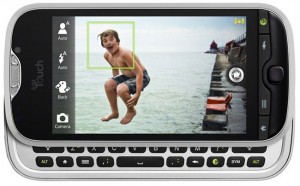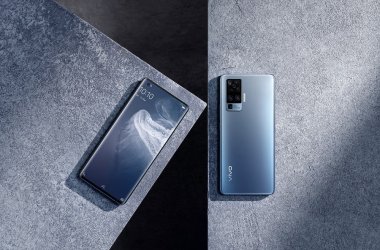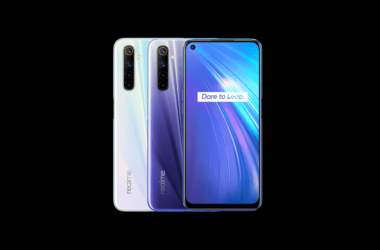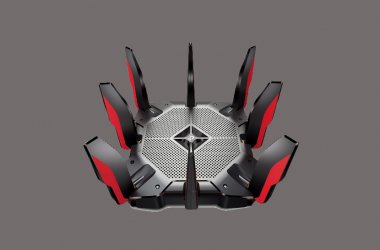 One of the biggest trends in smartphones right now is toward models equipped with powerful, high-end cameras. Phone manufacturers are no longer content to play the megapixel game, either. As we saw in our previous smartphone camera tests, having more megapixels doesn’t necessarily translate into taking better photos. Two phones with 8-megapixel sensors can capture very different-looking pictures. This year, smartphone manufacturers are focusing on image processing, advanced controls, and full-featured interfaces for their cameras. Many smartphone cameras now come with a wide array of shooting modes, including panorama, HDR (high dynamic range), and macro modes.
One of the biggest trends in smartphones right now is toward models equipped with powerful, high-end cameras. Phone manufacturers are no longer content to play the megapixel game, either. As we saw in our previous smartphone camera tests, having more megapixels doesn’t necessarily translate into taking better photos. Two phones with 8-megapixel sensors can capture very different-looking pictures. This year, smartphone manufacturers are focusing on image processing, advanced controls, and full-featured interfaces for their cameras. Many smartphone cameras now come with a wide array of shooting modes, including panorama, HDR (high dynamic range), and macro modes.
The PCWorld Labs matched some of the hottest smartphones to come out this year in a head-to-head battle to see which one rates as the best camera phone.
The Contenders
We tested seven phones running three different operating systems across four carriers to see which model had the best all-around camera and camcorder. For T-Mobile, we tested the Samsung Galaxy S Blaze 4G and the HTC One S (both Android phones). For A&T, we selected the HTC Titan II and the Nokia Lumia 900 (both Windows Phones). From Sprint, we chose the LG Viper 4G LTE (Android). And for Verizon, we used the Apple iPhone 4S. We also threw in the T-Mobile myTouch Slide 4S (Android), our previous champion for still-life photos.
We were particularly interested to see how the Nokia Lumia 900 and the HTC One S would perform. When Nokia introduced the Lumia 900 at CES 2012, the company made a big deal about the camera’s f2.2-aperture Carl Zeiss lens. Similarly, HTC emphasises the camera technology in its One smartphone line. The HTC One S has the HTC ImageChip, which supports an f2.0 aperature. We were also curious about how well the HTC Titan would do, since it has a 16-megapixel camera–the highest megapixel count of all of our phones.
How We Tested
With each phone, we used a truncated version of our regular testing methodology for point-and-shoot cameras. Our analysts in the PCWorld Labs shot a still-life scene using automatic settings in an artificial daylight environment; we turned the flash off to test exposure and color levels. We then shot an image of a target resolution chart to test how well the camera sensor could capture sharp details. We judged the still-life photos for exposure, color accuracy, and sharpness; we scored the photos of the resolution chart based on sharpness and distortion.
We asked a panel of four judges to examine a printout of each image and to evaluate four components of image quality for each – exposure, color accuracy, sharpness, and distortion. The judges assigned one of five word scores to each image-quality component of each photo print: Poor, Fair, Good, Very Good, or Superior.
For video testing, we shot a moving scene of a miniature Ferris wheel and train. We fixed each phone to a tripod, and then took two test clips. While shooting each test clip, we played the same audio clip through speakers to evaluate how well each phone picked up sound. In the first test video clip, we shot in bright indoor lighting. In the second test video clip, we shot with the overhead lights turned off and a floor lamp turned on behind the camera to evaluate low-light footage. Our judges evaluated all videos on the same five-word-score scale that they used for still images.
Overall Still-Image Results
To our surprise, the T-Mobile myTouch Slide 4G continued to reign supreme in our subjective tests of still image quality. The myTouch received the highest overall image-quality score (82.5) and was the only phone to earn an overall word score of Very Good. The iPhone 4S finished second, with an overall image-quality score of 79.3 (and a word score of Good). At the other end of the rankings, the HTC One S picked up the lowest overall score (72.4) from our panel of judges and was the only phone to receive an overall word score of Fair. This result sharply contradicts our full rated review of the HTC One S, which praised its versatile camera modes and color accuracy. You can judge the HTC One S’s images against the competition’s on the last page of this story.
The myTouch Slide 4G did exceptionally well in our still life comparisons. It outscored its rivals for color accuracy, sharpness, and exposure. The iPhone 4S fairly consistently took the second-highest scores next to the myTouch 4G, though the LG Viper scored higher than the iPhone 4S for exposure, and the Nokia Lumia 900 scored higher than the iPhone 4S for sharpness. All of the smartphones scored relatively poorly in our distortion tests – a fairly common occurrence with the smartphone cameras we test. The sensors in smartphone cameras simply aren’t big enough to earn strong marks on this measure.
Overall Video Quality Results
Though the myTouch 4G Slide dominated our still image-quality tests, it tanked on our video-quality tests. The winner for video was the iPhone 4S, which achieved the highest average scores for regular-light and low-light video, and for audio quality. Finishing a close second was the last-place finisher in our still-life category, the HTC One S. The One S actually tied with the iPhone 4S for low-light and regular-light video, but lost the battle due because of its slightly lower score for audio quality. The Samsung Galaxy Blaze achieved the highest score of audio quality in video.





